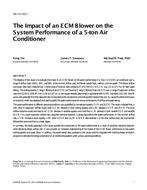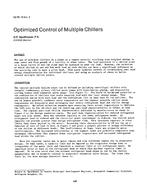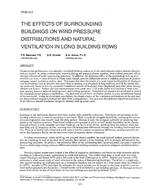Today’s critical high-density electronic equipment environments need adequate equipment (rack) cooling without excessive energy usage. This paper presents a methodology for optimizing the rack cooling effectiveness and HVAC cooling costs in telecom and data centers. Since raised-floor air distribution is the most common way of cooling data centers, this scheme is used here to demonstrate the methodology. Two key design parameters are evaluated: The supply air temperature and the supply airflow rate. These parameters not only impact the rack cooling effectiveness but also the energy costs for cooling the space. A leading Computational Fluid Dynamics (CFD) code is used to establish the temperature field and airflow pattern for various combinations of these parameters in a typical data center with hot and cold aisles. A new function was developed within the CFD code to compute the Rack Cooling Index (RCI) for evaluating the thermal equipment environment. This Index is designed to be a measure of how effectively equipment racks are cooled and maintained within industry thermal guidelines and standards. In addition, hypothetical cost functions are introduced based on chiller and fan energy costs. Based on the RCI results and the energy cost functions, recommendations are given for optimizing the supply temperature and airflow. Specifically, the overall performance is improved by modifying the temperature and airflow to values higher than traditionally thought useful. When the RCI algorithm has been incorporated into commercial CFD codes (or used manually), engineers and architects will have a new practical tool to design and evaluate telecom and data centers for optimal equipment rack cooling effectiveness and HVAC cooling costs.
Units: Dual
Citation: ASHRAE Transactions, vol. 114, pt. 1, New York 2008
Product Details
- Published:
- 2008
- Number of Pages:
- 5
- File Size:
- 1 file , 1.9 MB
- Product Code(s):
- D-NY-08-004


